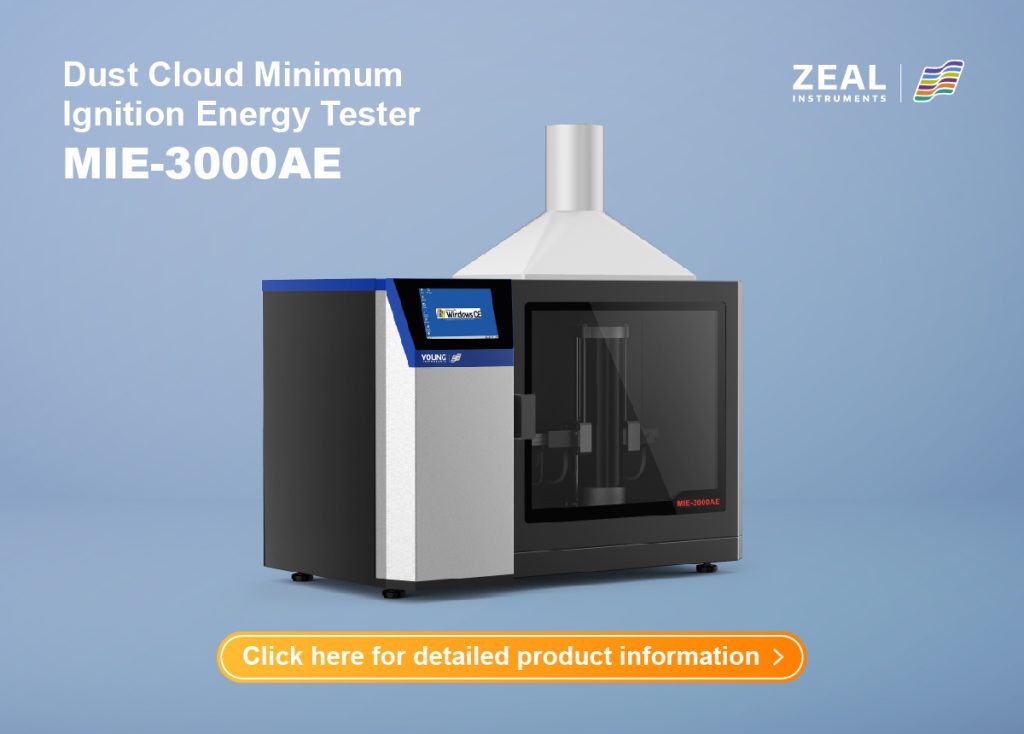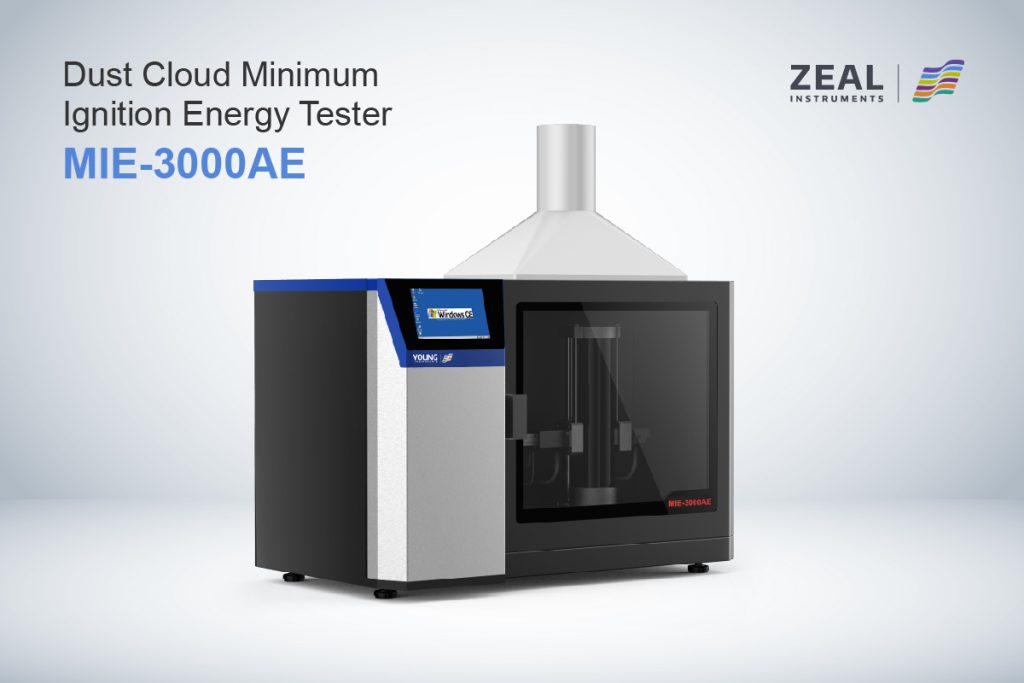MIE Testing Apparatus: A Comprehensive Guide
If you’re working with combustible dust, you need to know the Minimum Ignition Energy (MIE) of the material to ensure safe handling and processing. MIE testing is a critical step in identifying the potential hazards of dust clouds and determining the necessary safety measures to prevent explosions. The MIE testing apparatus is a specialized tool designed to measure the amount of energy required to ignite a dust cloud.

The MIE testing apparatus is a carefully calibrated instrument that uses a capacitive discharge spark to ignite a dust cloud. The apparatus can be used to test a variety of materials, including powders, fibers, and dusts. The results of the test provide valuable information about the potential hazards of the material and are used to develop safety protocols for handling and processing the material.
MIE testing is an essential part of any dust safety program. Without accurate MIE data, it’s impossible to know the potential risks associated with handling and processing combustible dust. The MIE testing apparatus is a critical tool that helps ensure the safety of workers and facilities by identifying potential hazards and developing appropriate safety protocols.
Fundamentals of MIE Testing
Principles of Minimum Ignition Energy
Minimum Ignition Energy (MIE) is a critical parameter for assessing the potential explosion hazard of dust clouds. It is defined as the minimum energy required to ignite a dust cloud at its most ignitable concentration in air. MIE is determined by exposing a dust cloud to a defined energy source and observing whether ignition occurs.
The energy source is typically an electrical spark, and the MIE value is expressed in millijoules (mJ). The lower the MIE value, the easier it is for a dust cloud to ignite. MIE values can vary widely depending on the properties of the dust, such as particle size, shape, and moisture content.
Key Components of MIE Apparatus
MIE testing apparatus typically consists of a test chamber, an ignition source, and a measurement system. The test chamber is designed to hold a dust cloud of a known concentration and volume. The ignition source is used to provide a spark of a known energy level to the dust cloud. The measurement system is used to detect whether ignition has occurred and to measure the energy of the spark that caused the ignition.
The most common type of MIE apparatus is the Hartmann tube, which consists of a cylindrical tube with a spark gap at one end and a dust dispersion system at the other end. The dust is dispersed into the tube, and the spark is generated at the spark gap to ignite the dust cloud. The energy of the spark is measured using a capacitor discharge system.
Other types of MIE apparatus include the MIKE 3 apparatus, which is similar to the Hartmann tube but has a different dust dispersion system, and the Godbert-Greenwald furnace, which is used for measuring the MIE of combustible gases and vapors.
MIE testing is an essential tool for assessing the explosion hazard of dust clouds. By understanding the principles of MIE and the key components of MIE apparatus, you can better appreciate the importance of accurate MIE measurements and the need for reliable MIE testing equipment.

MIE Testing Procedures
Sample Preparation
Before conducting the MIE test, you need to prepare the sample. The sample must be representative of the dust that you want to test. You can collect the sample using a dust collector or any other suitable method. Once you have collected the sample, you need to dry it to equilibrium. The moisture content of the sample can affect the MIE test results, so it is important to ensure that the sample is dry.
The sample must be sieved to remove any particles larger than 500 μm. The median particle size of the sample must be less than 63 μm. This is because the MIE test is designed to test the ignition sensitivity of small particles.
Test Execution
The MIE test can be run with or without inductance. The test equipment must be calibrated using a series of reference dusts whose MIE values lie within established limits. Once the test equipment is calibrated, you can determine the relative ignition sensitivity of other dusts by comparing their MIE values with those of the reference dusts or with dusts whose ignition sensitivities are known from experience.
During the test, a dust cloud is dispersed in a test chamber. The chamber is then exposed to a capacitive discharge spark. The minimum spark energy needed to ignite the dust cloud is measured. This is the MIE of the dust. The test is repeated several times to ensure the accuracy of the results.
It is important to note that the MIE test is just one of several tests that can be used to evaluate the explosion hazards of combustible dusts. Other tests include the Minimum Explosible Concentration (MEC) test and the Limiting Oxygen Concentration (LOC) test.
Data Interpretation and Analysis
Understanding Test Results
Once the Minimum Ignition Energy (MIE) test is performed using the MIE Testing Apparatus, the data obtained needs to be analyzed and interpreted to determine the risk of ignition posed by the dust cloud. The MIE value obtained is an important parameter that indicates the minimum energy required to ignite the dust cloud under specific conditions. The lower the MIE value, the greater the risk of ignition.
In addition to the MIE value, other parameters such as the Maximum Experimental Safe Gap (MESG) and the Limiting Oxygen Concentration (LOC) also need to be considered. MESG is the maximum gap width that the dust cloud can withstand without igniting, while LOC is the minimum oxygen concentration required for ignition to occur.
Safety Parameters Determination
The MIE value, along with MESG and LOC, can be used to determine the safety parameters required to handle the dust cloud safely. For instance, if the MIE value is low, it indicates that the dust cloud is highly flammable, and hence, additional safety measures such as explosion-proof equipment, dust collection systems, and other engineering controls need to be implemented to reduce the risk of ignition.
Similarly, the MESG value can be used to determine the safe distance between equipment and the dust cloud to prevent ignition. The LOC value can be used to determine the minimum oxygen concentration required for safe handling of the dust cloud.
Overall, the MIE Testing Apparatus is a critical tool for assessing the risk of ignition posed by dust clouds. By interpreting and analyzing the test results, safety parameters can be determined to ensure safe handling and processing of the dust cloud.
Maintenance and Calibration
Regular maintenance and calibration of your MIE Testing Apparatus is crucial to ensure accurate and reliable results. Neglecting routine maintenance and calibration can result in inaccurate readings, which can lead to faulty products, wasted materials, and lost time.
Routine Maintenance Schedule
It is recommended that you perform routine maintenance on your MIE Testing Apparatus according to the manufacturer’s instructions. This may include cleaning, lubrication, and replacement of worn parts. In addition, you should inspect the apparatus regularly to ensure that it is in good working condition.
Here is an example of a routine maintenance schedule for your MIE Testing Apparatus:
| Maintenance Task | Frequency |
| Clean the apparatus | After each use |
| Lubricate moving parts | Monthly |
| Replace worn parts | As needed |
| Inspect the apparatus | Weekly |
Calibration Standards and Practices
Calibration is the process of comparing the measurements of your MIE Testing Apparatus to a known standard to ensure accuracy. Calibration should be performed regularly to ensure that your apparatus is providing accurate and reliable results.
The calibration of your MIE Testing Apparatus should be performed according to recognized industry standards and practices. These may include ISO/IEC 17025, ASTM E4, or other relevant standards.
It is recommended that you have your MIE Testing Apparatus calibrated by a qualified calibration service provider. This will ensure that the calibration is performed correctly and that the results are accurate.
In summary, routine maintenance and calibration are essential for ensuring accurate and reliable results from your MIE Testing Apparatus. By following a regular maintenance schedule and using recognized calibration standards and practices, you can ensure that your apparatus is providing accurate and reliable results.
Applications and Limitations
Industrial Applications
MIE testing is an important tool in the field of industrial safety. It is used to determine the minimum energy required to ignite a dust cloud or powder. This information is critical in industries where dust and powders are present, such as chemical manufacturing, food processing, and pharmaceuticals. MIE testing is an essential part of the safety protocols in these industries because it helps prevent dust explosions and fires.
MIE testing is also used to evaluate the safety of new materials and processes. By testing the MIE of a material, researchers can determine whether it is safe to use in a particular application. For example, MIE testing can be used to evaluate the safety of new chemicals or to determine the safety of a new manufacturing process.
Limitations of MIE Testing
MIE testing has some limitations that should be considered when interpreting the results. One of the limitations is that MIE testing does not account for the variability of dust clouds in the real world. The test is conducted under controlled laboratory conditions, and the results may not accurately reflect what happens in an actual industrial setting.
Another limitation is that MIE testing only measures the minimum energy required to ignite a dust cloud or powder. It does not provide information on the severity of the explosion or fire that may result. This means that MIE testing should be used in conjunction with other safety measures, such as explosion suppression systems and fire extinguishers.
Finally, MIE testing is not suitable for all types of dust and powder. Some materials may require different testing methods or may not be suitable for testing at all. For example, MIE testing may not be suitable for materials that are too reactive or too sensitive to be tested safely.
Overall, MIE testing is an important tool for ensuring industrial safety. However, it should be used in conjunction with other safety measures and should be interpreted with an understanding of its limitations.










































